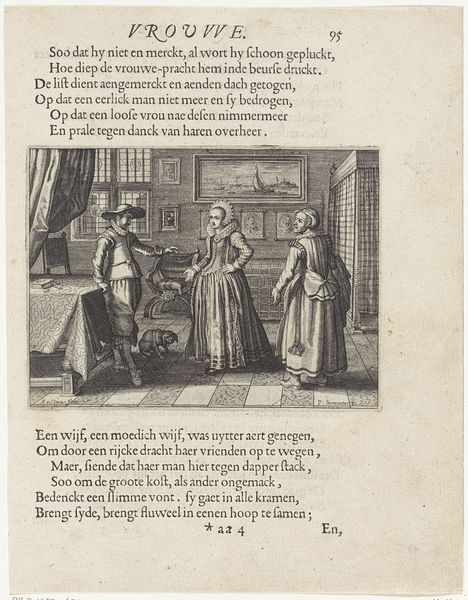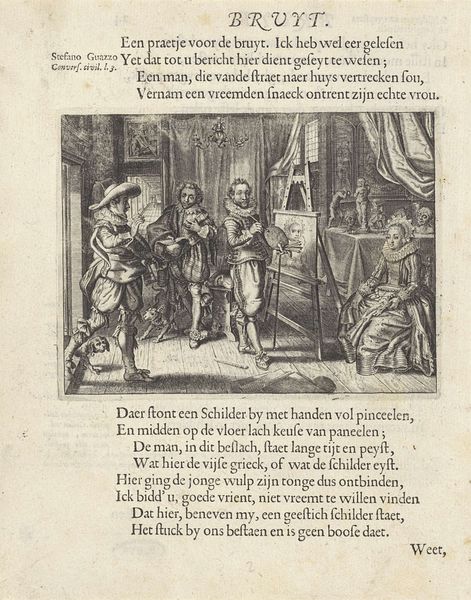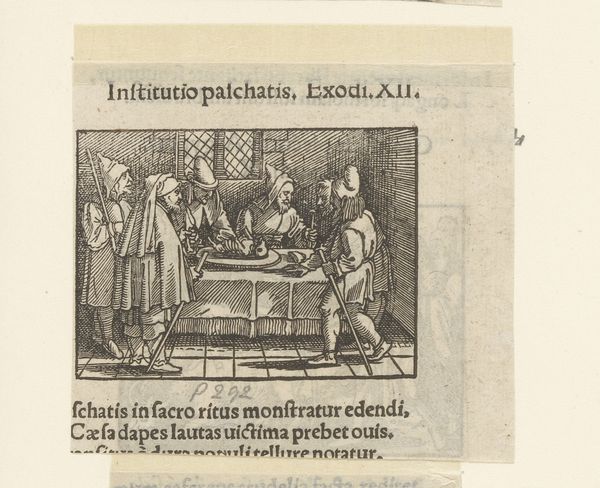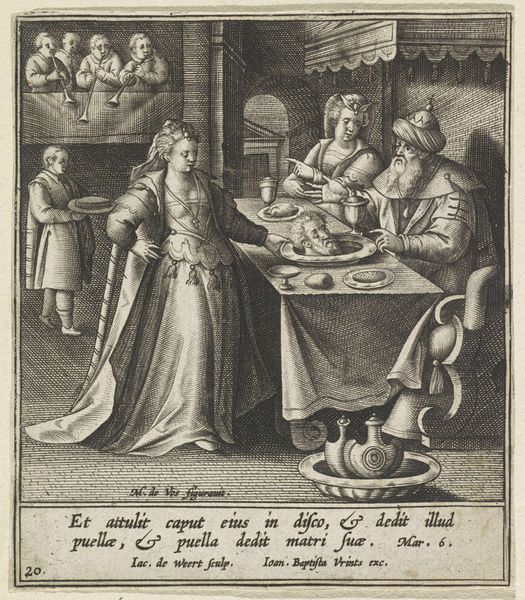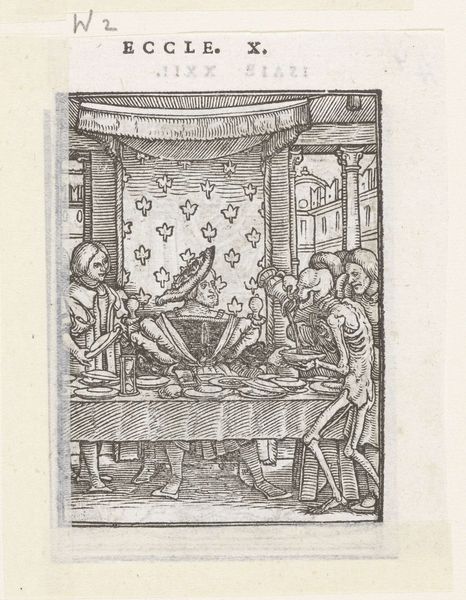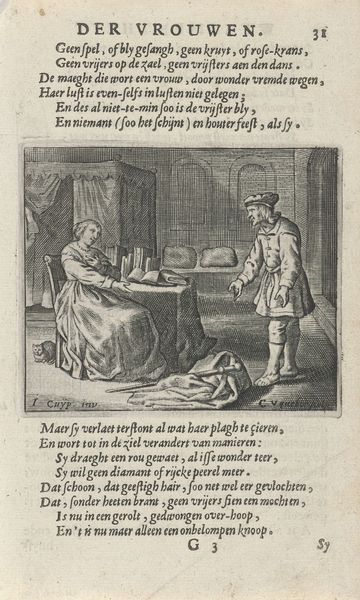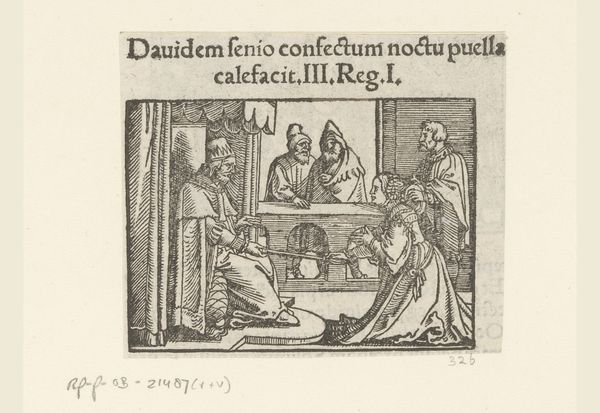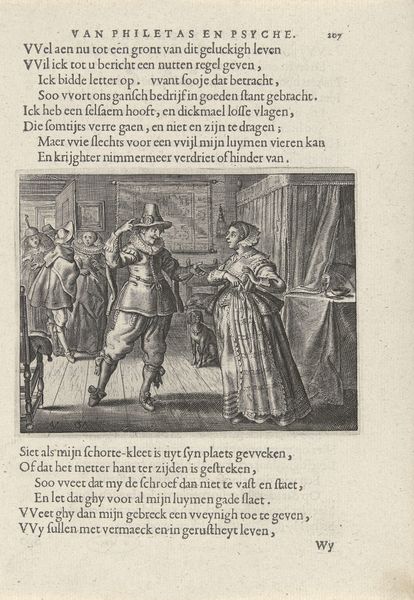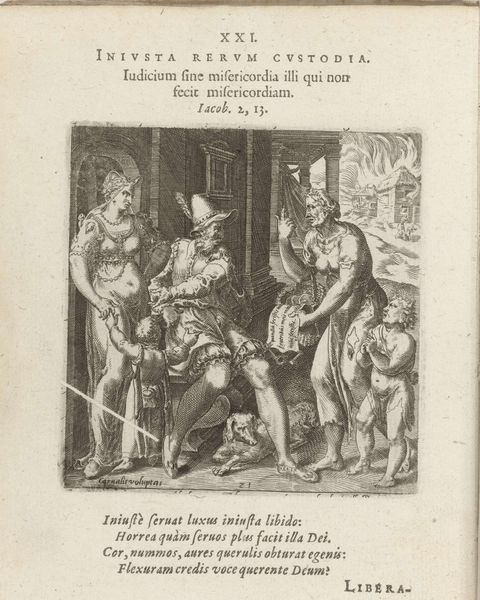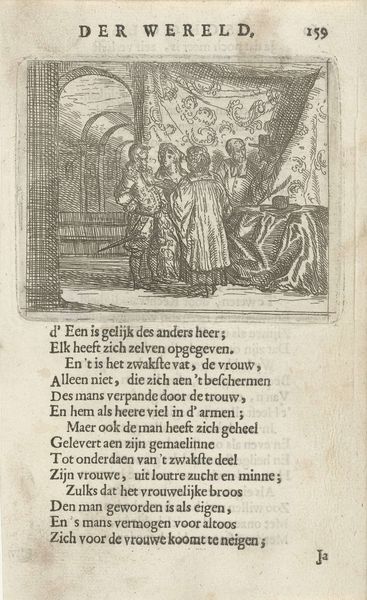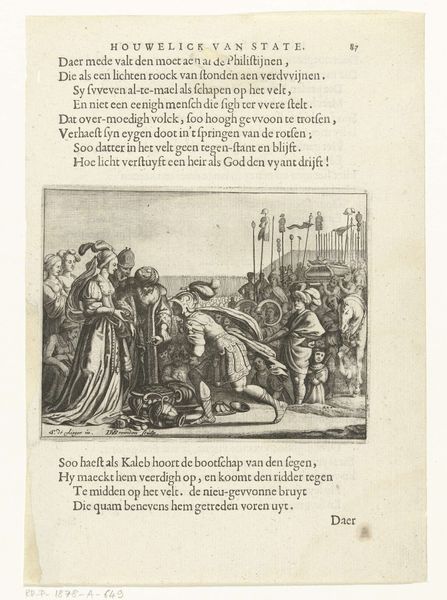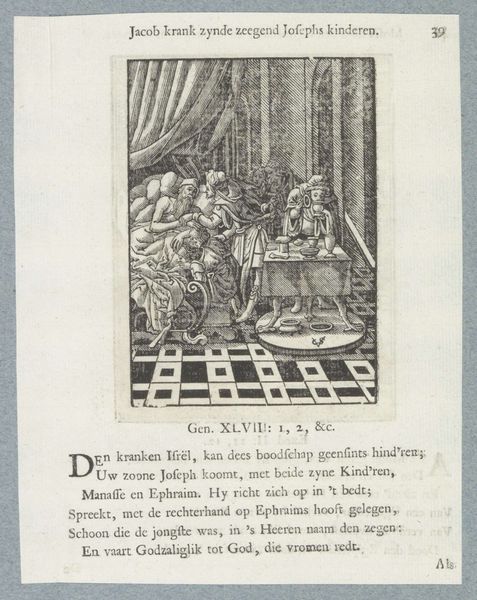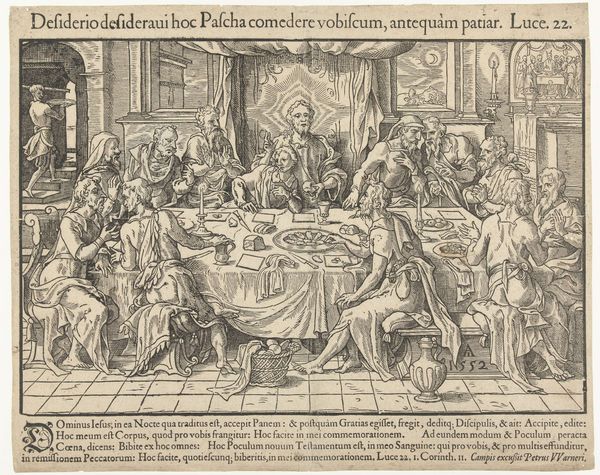
print, engraving
#
narrative-art
#
dutch-golden-age
# print
#
figuration
#
group-portraits
#
genre-painting
#
engraving
Dimensions: height 66 mm, width 76 mm, height 141 mm, width 87 mm
Copyright: Rijks Museum: Open Domain
Curator: This is Paulus Lesire’s “Musicerend Gezelschap,” an engraving created in 1643 during the Dutch Golden Age. Immediately striking, wouldn’t you say? Editor: Striking, yes, in the sense that it immediately evokes a feeling of reserved domesticity and muted aspiration. It reminds me of understated wealth and the cultivation of artistic talent within the confines of the family unit. Curator: Exactly! Lesire situates his artwork at the nexus of domestic life and societal expectations, doesn't he? We see an inscription describing Cornelia Blanckenburch as exceptionally skilled in music, along with her family. It raises questions about women’s education and permissible roles in 17th-century Dutch society. Editor: Beyond societal pressures, the symbols within are fascinating. Take, for instance, the presence of musical instruments themselves, as well as what the Dutch Golden Age associates with artistic practice. Are they metaphors for harmony within the family, or personal self expression? Curator: It is intriguing, also, to view the piece through an intersectional lens. While it depicts a privileged, white, bourgeois family, the historical context includes the burgeoning Dutch slave trade and colonialism. How does this imagery contrast with those silenced voices, highlighting the contradictions within the Dutch Golden Age? Editor: An excellent question, and the contrasts leap from the page. While it depicts a moment of cultural accomplishment, it can also suggest themes of societal injustice. The image and the themes create a multi-dimensional image of power. Curator: This musical scene, confined by the copperplate and its sociohistorical constraints, leaves a complex and troubling cultural residue, doesn't it? Editor: Indeed, the resonances between visibility and marginalisation within Dutch history highlight enduring contradictions and moral quandaries still pertinent today. It all culminates to something so poignant.
Comments
No comments
Be the first to comment and join the conversation on the ultimate creative platform.
